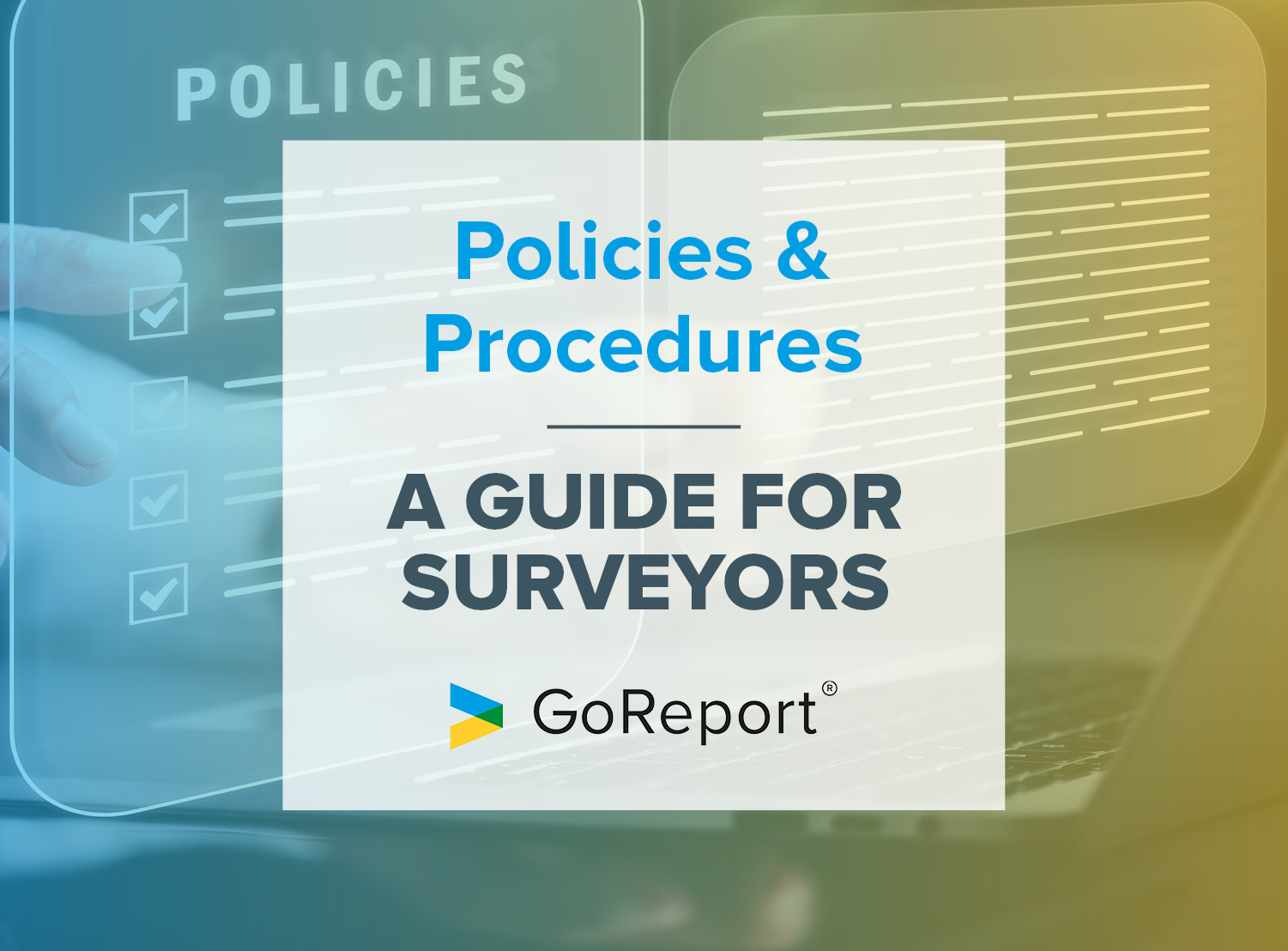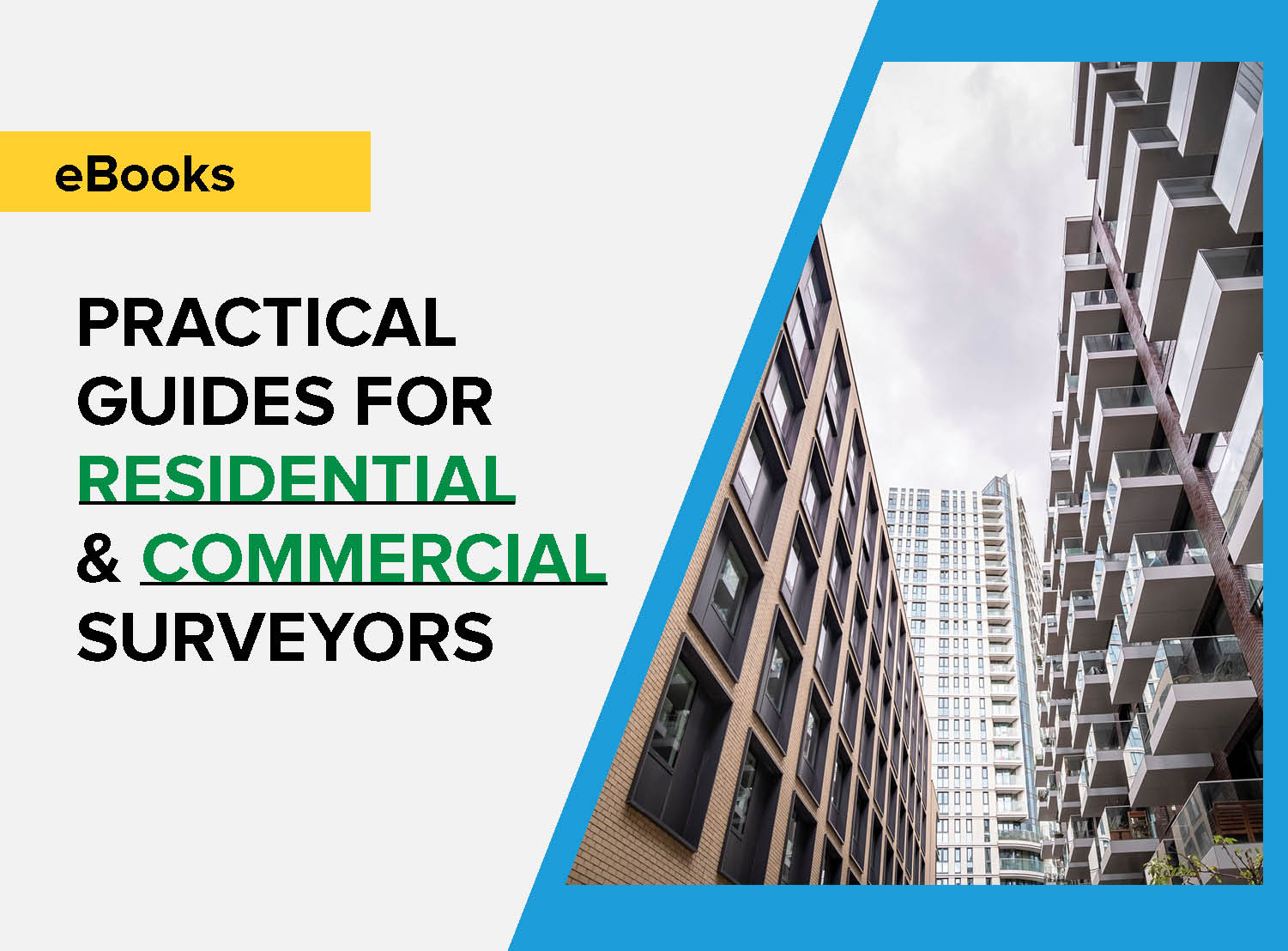Policies and Procedures: A Guide for Surveyors

It’s no secret that surveyors working in both residential and commercial profession must maintain a high level of accuracy, compliance, and efficiency. Because of this, it’s essential to have clear policies and procedures in place to help run the operations smoothly, maintain reliable reports, limit on-site accidents, and keep up the professional ethics of the entire team, regardless of if you’re a one-man band or an enterprise business.
Not sure where to start? Our guide explores the importance of having policies and procedures in place, how they relate to corporate compliance, and how a surveyor can apply them to raise the stakes in their work.
Contents:
- What are Policies and Procedures?
- Why Policies and Procedures Are Important in Surveying
- Examples of Policies and Procedures for Surveyors
- How Policies and Procedures Enhance Corporate Capability
- Best Practices in Upholding Policies and Procedures
What are Policies and Procedures?
Policies and procedures are set standards for maintaining consistency, quality, and compliance in professional environments. Policies are overarching principles that guide decision-making, whereas procedures detail the specific actions required to implement these policies.
In surveying, examples of policies and procedures include:
- Ensuring compliance with UK building regulations and environmental standards.
- Following quality assurance checks to ensure accuracy in reports and measurements.
- Safeguarding client data through proper data management practices.
By clearly defining these standards, surveyors can navigate any size project efficiently while minimising risks and errors.
Why Policies and Procedures Are Important in Surveying
Surveying is a field where precision, compliance, and professionalism are essential. Policies and procedures provide the framework necessary to deliver accurate reports, ensuring projects meet regulatory standards while upholding the trust of clients and the reputation of your business. Here are some reasons why they are indispensable:
Compliance with Legal and Industry Standards
Surveyors work in a highly regulated environment; for example, the Royal Institution of Chartered Surveyors, commonly referred to as RICS, demands strict adherence to codes of best practice. Having clear policies and procedures in place ensures that the surveyor meets the standards set by these organisations, helping avoid legal and financial consequences due to non-compliances. For instance, policies about building surveys have to correspond with safety and structural codes, whereas for land surveyors, there should be policy considerations on property boundaries and environmental laws. Where these policies are absent, even minor oversight may cause expensive disputes or delays in projects.
Accuracy of Reports
Accuracy is essential in surveying, as even small errors can lead to significant consequences in real-world applications. Policies and procedures ensure consistent, high-quality data by outlining best practices for measurement, validation, and reporting. For example, double-checking measurements, calibrating equipment regularly, using digital tools, and cross-referencing data sources all contribute to producing highly accurate reports. By adhering to these standards, surveyors can minimise mistakes and provide clients with reliable, actionable insights.
Efficiency and Productivity
Time is often a critical factor in surveying projects, so it’s important that everything is done as efficiently as possible without reducing the quality of surveys. Clear procedures eliminate confusion, reduce the chances of errors, and streamline workflows, such as having predefined procedures for setting up equipment or processing digital survey data. Teams can avoid redundant tasks, stay on schedule, and focus on delivering high-quality outcomes.
High Standards Across the Team
In organisations with multiple surveyors working on different projects, having set policies and procedures ensures everyone follows the same high standards by outlining expectations for quality, behaviour, and communication. This not only improves team performance and compliance but also enhances the overall reputation of the business and ensures clients stay loyal.
Examples of Policies and Procedures for Surveyors
Surveying workplaces requires policies and procedures tailored to their unique challenges and operations. Beyond generic workplace policies, there are specific ones essential for surveyors:
Health and Safety Policies
Surveying often takes place in unpredictable environments such as construction sites or busy urban areas. Even visiting residential properties can come with risks, particularly when the likes of mould and damp or asbestos are involved. Health and safety policies prepare surveyors for any potential risks, limiting workplace accidents. Specific guidelines might include conducting risk assessments, using personal protective equipment (PPE), and having emergency response plans outlining how to handle slips, falls, or hazardous materials.
Environmental Compliance Policies
It’s not all about maintaining reputation and quality work—surveyors must also find ways to minimise their environmental impact. Policies may include avoiding disruption to wildlife, preventing soil erosion, or following waste disposal rules. Specific procedures might involve documenting environmental conditions before starting a project or using non-invasive tools for surveys.
Data Collection and Management Policies
Accurate and secure data collection is crucial for building solid reports. Policies should cover the use of tools like GPS devices, AI tools, and 3D scanners, as well as data storage, including encryption and regular backups to protect sensitive information. The procedures might specify how to format reports or store past projects for easy retrieval, as well as ensure any client data is kept private.
Quality Assurance Policies
Maintaining high standards is critical, and quality assurance policies ensure that each project is thoroughly reviewed. Procedures might include comparing data to industry benchmarks, conducting peer reviews, or scheduling audits to identify improvements. For instance, a policy might require re-checking key measurements before submitting a survey.
Client Communication Policies
Clear communication is key to successful client relationships, as well as ensuring project expectations are clear from the get-go. Policies should outline how to provide updates, present reports, and respond to feedback. For example, surveyors might be required to reply to client queries within 24 hours and provide clear explanations of findings.
How Policies and Procedures Enhance Corporate Capability
Policies and procedures play a vital role in enhancing the corporate capability of surveying businesses, helping them to operate efficiently, adapt to challenges, and deliver exceptional results—all while ensuring on-site safety. These frameworks contribute to the development of a strong professional reputation by establishing clear and consistent guidelines to follow. Clients and stakeholders are more likely to trust a firm that demonstrates reliability through well-documented processes, such as standardised communication practices and rigorous quality assurance measures. This trust builds long-term client relationships and strengthens the business’ reputation.
For growing businesses, policies and procedures are the foundation of scalability, ensuring consistency as teams grow or take on larger, more complex projects. Standardised processes help onboard new employees efficiently, maintaining high standards across the organisation. This consistency is essential for meeting client demands without compromising quality.
Operational efficiency also benefits from clear policies, streamlining workflows, reducing redundancies, and clarifying responsibilities. For example, defined data collection processes prevent duplication and ensure seamless integration into final deliverables. Innovation thrives within a strong procedural framework, allowing surveyors to adopt new technologies while maintaining quality and compliance.
Finally, clear policies allow for accountability, teamwork, and a positive workplace culture, defining responsibilities while promoting collaboration and resilience. A unified team is better equipped to overcome challenges and drive growth. By embedding clearly defined policies and procedures, surveying firms can enhance efficiency, adaptability, and competitiveness in a fast-evolving industry.
Best Practices in Upholding Policies and Procedures
Establishing effective policies and procedures is only the beginning. To ensure their success, surveying companies must take proactive steps to incorporate these guidelines into their daily operations.
Training and Awareness
Regular training keeps surveyors updated on regulations, tools, and best practices, as well as keeping them up to date with any industry news. Workshops on RICS standards, hands-on sessions with new equipment, and health and safety refreshers are essential. For example, surveyors using drones could attend specialised courses on airspace regulations.
Documentation and Accessibility
Policies should be thoroughly documented and easily accessible, such as via cloud-based platforms. Having clear templates for the likes of risk assessments, equipment checklists, and report guides ensures consistency. Keeping documents updated and sharing them with the team promotes adherence, as well as ensuring they are regularly checked and updated when needed.
Technology Integration
Using technology can simplify compliance and consistency across both the team and reports. Tools like GoReport, AI tools, and laser scanners can automate processes and reduce errors. Ensure that there is a clear onboarding process and training for team members so that all technology is used effectively.
Feedback and Continuous Improvement
Encouraging feedback from surveyors helps refine policies over time. Regular reviews and team discussions can highlight gaps or outdated practices. For example, a feedback loop might reveal that a maintenance procedure is overly complicated and needs simplification.
Streamline your surveying process with GoReport, designed to support surveyors with innovative digital tools for data collection, seamless reporting, and improved efficiency. Our solutions are tailored to help you maintain high standards in policies and procedures while enhancing your workflow. Explore a demo or free trial of GoReport today.





